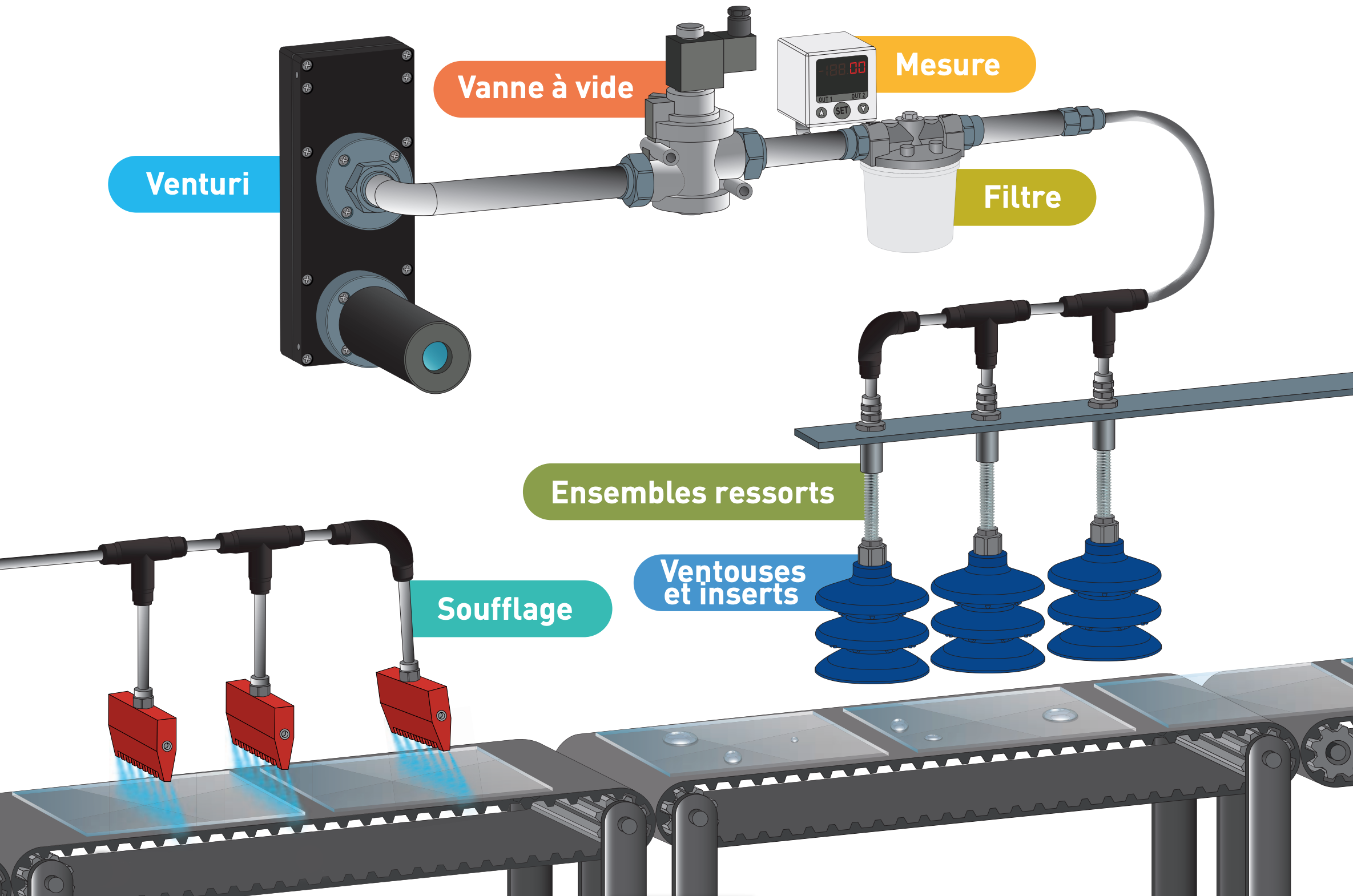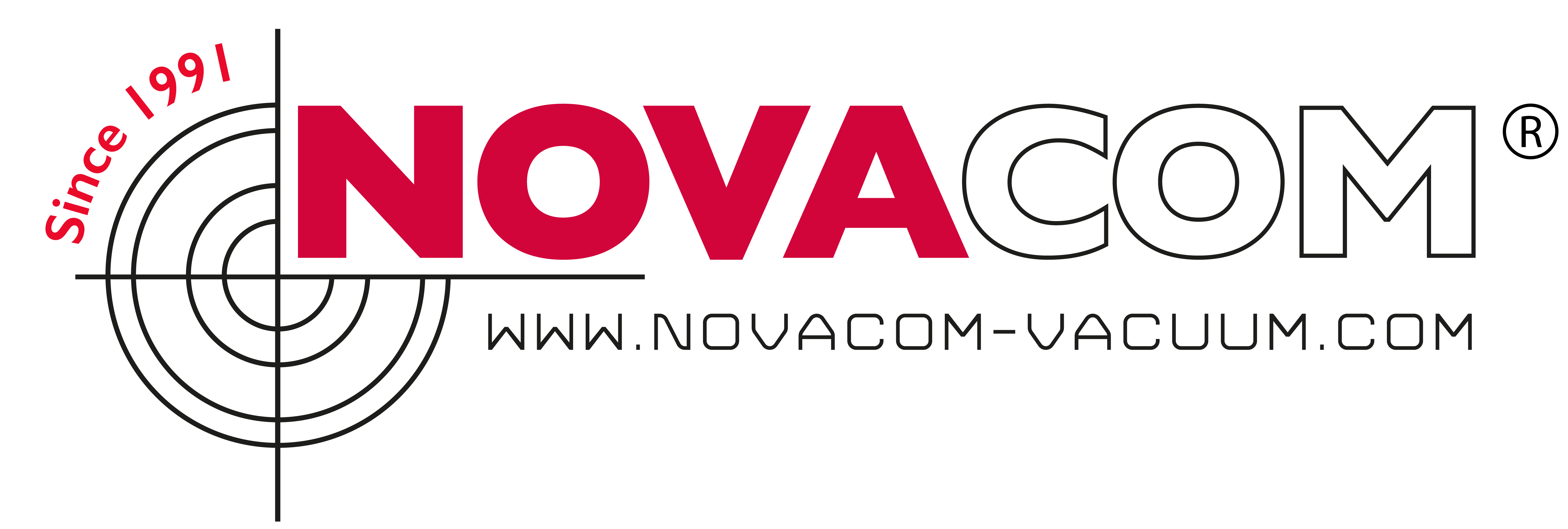
Vacuum gripping ensures the handling of a multitude of objects without damaging them and allowing for high vacuum transfer rates. Vacuum manipulation is a technique widely used in the manufacturing industry (automotive, food, plastics, pharmaceuticals, packaging, printing, etc.). It involves grabbing an object - which can be a sheet metal, a paper sheet, a finished product or a food item - using suction cups or clamps, to transport it from one workstation to another or to place it in its packaging, for example. The suction cups are integrated into a handling device and the vacuum is ensured by a circuit controlled by automation and powered by vacuum generators, also called venturis or ejectors.
Vacuum, also known as "negative pressure" or "suction," is created when the pressure is lower than the atmospheric pressure exerted by the weight of the ambient air.
Atmospheric pressure becomes a source of energy when the pressure in a closed space is reduced.
Be aware of the influence of altitude. Atmospheric pressure varies depending on the altitude at which it is measured.
In science, vacuum is measured using absolute pressure. The reference point is absolute zero, which is an airless void, and its value is preceded by a positive sign. In practice and for industrial applications, relative pressure is used. Depression is indicated relative to ambient pressure. The value of the vacuum is preceded by a negative sign because the ambient pressure, as the reference point, is considered to be equal to 0 bar.idérée comme étant égale à 0 bar.
VOLUME AND FLOW
Giving the volume of a quantity of air makes no sense if the pressure and temperature of that volume are not specified. That's why so-called "normal" conditions have been defined in order to standardize this value.
The ANR (Normal Reference Atmosphere) conditions are: Temperature = 20°C = 100 kPa = 1 bar and humidity = 65%. The volume of the vacuum is then noted as Nl and read as "normal liters".
The definition adopted for normal volume also applies to flow rates. The flow rate of a volume of air passing through a section per unit time. To express the suction capacity or air flow rate, we speak of "normal liters per minute" or Nl/min.
UNITÉ DE MESURE
The vacuum is expressed as a percentage (%) of atmospheric pressure. Several units are used to designate pressure lower than atmospheric pressure: the bar (bar), the millibar (mbar), or the percentage of atmospheric pressure (%). One can also encounter the kilopascal (kPa), the torr or millimeter of mercury (mmHg), the kilogram-force per square centimeter (kgf/cm2), and the pound per square inch (psi).
| EXPRESSION | UNITS | |
|---|---|---|
| Dépression | -kPa | bar |
| Absolute pressure | inHg | mmH2O |
| % vacuum | mmHg | torr |
| Négative pressure | hPa | mbar |
TABLE DE CONVERSION DE PRESSION/VIDE
| Absolute résidual pressure | Pressure below atmospheric pressure | ||||||
|---|---|---|---|---|---|---|---|
| MBAR | Vacuum (%) | BAR | PSI | KPA | TORR,MMHG | KFG/CM² | HG |
| 900 | 10% | -0,101 | -1,45 | -10,1 | -76 | -0,103 | -3 |
| 800 | 20% | -0,203 | -2,9 | -20,3 | -152 | -0,207 | -6 |
| 700 | 30% | -0,304 | -4,35 | -30,4 | -228 | -0,31 | -9 |
| 600 | 40% | -0,405 | -5,8 | -40,5 | -304 | -0,413 | -12 |
| 500 | 50% | -0,507 | -7,25 | -50,7 | -380 | -0,517 | -15 |
| 400 | 60% | -0,608 | -8,7 | -60,8 | -456 | -0,62 | -18 |
| 300 | 70% | -0,709 | -10,15 | -70,9 | -532 | -0,723 | -21 |
| 200 | 80% | -0,811 | -11,6 | -81,1 | -608 | -0,827 | -24 |
| 100 | 90% | -0,912 | -13,05 | -91,2 | -684 | -0,93 | -27 |
1 mbar = 0,001 bar = 0,1 kPa = 0,75 mmHg = 0,01 ps
APPLICATION



 Italian
Italian French
French



